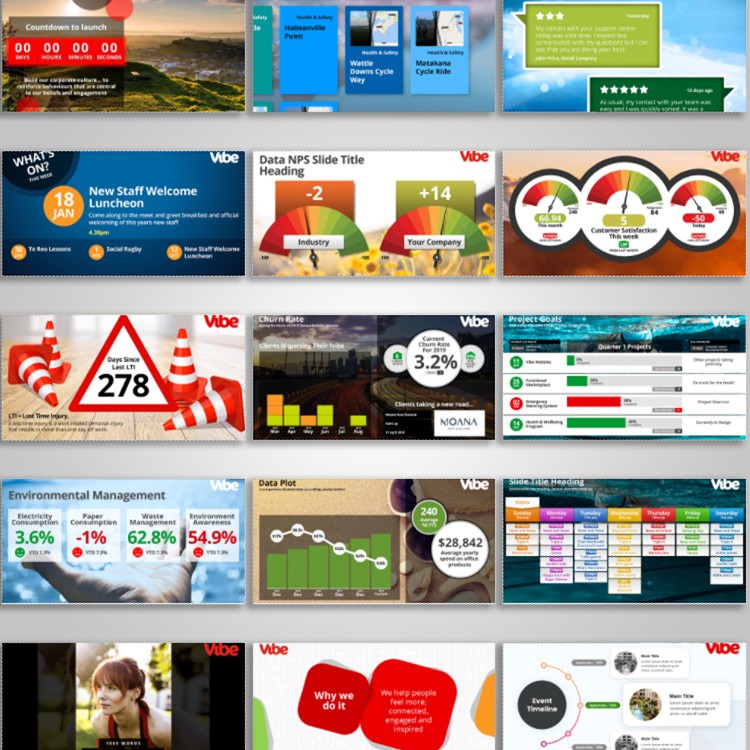Internal communications specialists in manufacturing firms already have the challenge of communicating to a non-desk and non-wired workforce – most manufacturing employees don’t have access to company devices such as computers or laptops where traditional internal communications materials are sent.
Adding on the complexity of communicating to a diverse manufacturing workforce presents a few communication challenges when it comes to engaging their workforce. It is worth investing time and effort to communicate with your entire workforce. Poor communication in manufacturing can lead to costly mistakes, more injuries, poor customer experience, poor employee engagement and more.
This article will highlight some common communication challenges and outline best practice for mastering internal communications for a multicultural manufacturing workforce.
Challenge 1: Communication strategies don’t factor in the frontline workforce
Frontline employees such as engineers, field sales staff, distribution centre workers and more, often don’t have access to corporate devices or they may not be at a desk to keep up to date with the latest internal comms.
Your communication strategy should factor that in by sharing messages on communication channels that the frontline workforce can access. Of course, sharing internal news via people managers is always an option, but channels such as digital signage screens are way more effective and can guarantee your messages stay consistent.
Sharing internal communications in real-time also keeps operations efficient. For instance, you can keep departments ahead of the latest delays, supply chain challenges, and more.
Challenge 2: Key messages are repeated to death – and easily forgotten
For most manufacturing organisations, health and safety is of the utmost importance. However, spending weeks training workers isn’t a feasible solution – it costs money, time, and resources.
Luckily, better health and safety training doesn’t necessarily mean more training. Make the most of your existing resources by taking your existing health and safety messages and use snackable learning and spaced repetition to reinforce key health and safety messages in the long term. Spaced repetition repeats key messages at increasing intervals to promote long-term learning.
Vibe’s platform has spaced repetition already built in so all you have to do is pre-load all your manufacturing health and safety messages
and hit publish. It’s literally that easy!

It's true! A picture is worth a thousand words so use engaging photos and videos where you can
Challenge 3: Language can impede understanding
Being proficient in the main workplace language creates a safe work environment. Especially when you need to operate machinery and be aware of hazards. Limited language proficiency can create issues such as not understanding the training material or warning signs.
We strongly encourage internal communicators to keep messages simple and snackable – that reduces the risk of misunderstanding the message.
And it doesn’t hurt to add a few pictures too. For instance, showing a picture of someone lifting heavy items safely is often more effective
than a written description.
Challenge 4: Culture clash in the workplace
Culture clashes impact manufacturing – even between close neighbours like New Zealand and Australia. In New Zealand there’s a lot more trust in relationships but in Australia there’s a greater emphasis on the transaction and the deliverables.
One of the first steps your multicultural manufacturing organisation can take is offer cultural training. Developing greater cultural awareness among your workforce creates a more diverse and empathetic workplace.
If you don’t already have culture programs in place, consider programs such as Digital
Moana that educate and create awareness.

Cultural programs like Digital Moana are just one of many that Vibe offers
The right communication channels will engage the multicultural manufacturing workforce
Multicultural manufacturing workforces are great – they’re diverse in skills and experience, and rich in culture. But internal communicators must rise to the challenge of crafting intentional messages that everyone in the workplace will understand. This prevents costly mistakes, injuries, poor customer experience and more.
The key is to use digital, real-time communication channels that all non-desk and non-wired staff can access. And when crafting messages, keep them clear and simple, so it leaves no room for misunderstanding.
Digital signage screens are one of the most effective ways to communicate to a manufacturing workforce. Vibe.fyi can help bring the benefits
of digital signage screens to life in your workplace. Get in touch with our experts to
get started.




